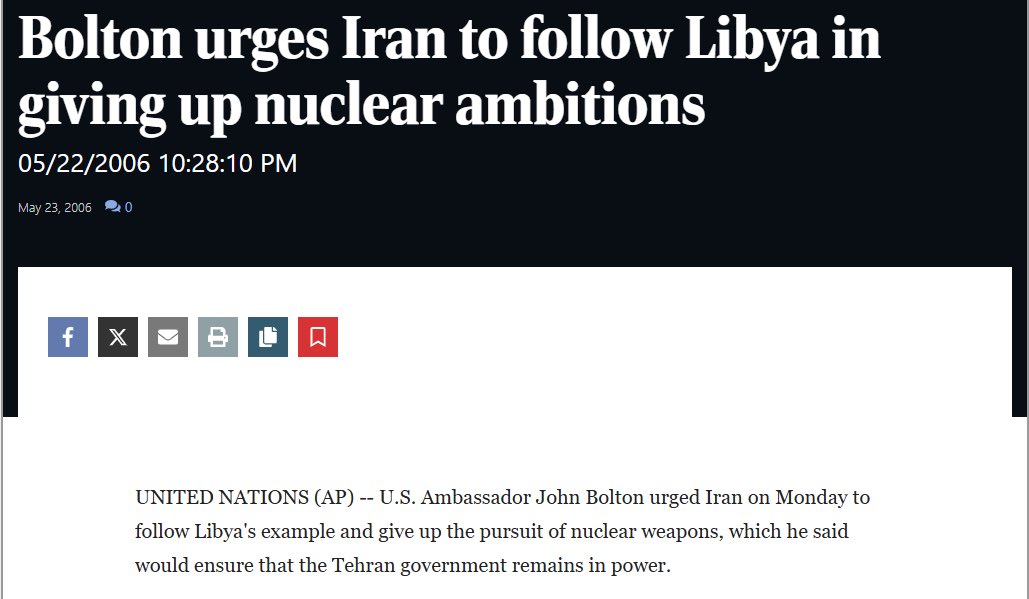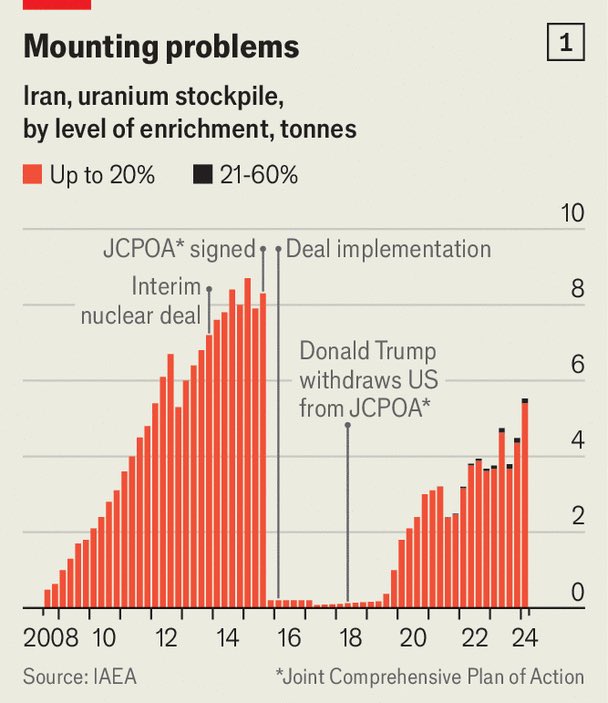Iran's nuclear program is at the most advanced point its ever been. Breakout time is under a week. Transparency is limited. Yet we're still debating dismantlement vs rollback/restrictions as though it's not an issue with a pretty conclusive track record.🧵
2/ Successive U.S. administrations have all agreed on one thing: The Islamic Republic having a nuclear weapon is bad for U.S. national security interests. That premise leads to two possible approaches: Dismantle it, or work to minimize the proliferation risk.
3/ The former has an unblemished record of failure over a period of decades. The possibility of that record changing now is nil.

4/ Now, if they won't dismantle by negotiations, what if you dismantle through force? U.S. intelligence assessments suggest that a setback would be as short as a matter of weeks - while increasing possibility of even more dangerous reconstitution.

5/ Which leads back to the other option: Limit the material that could be used for a weapon - as best as you can, for as long as you can. And make sure that monitoring is robust enough to ensure that they're fulfilling their commitments. Distrust, Restrict and Verify.
6/ This is the only method that has succeeded in the past. It's the only approach with a possibility of success in delivering a verified, long-term rollback of Iranian nuclear capacity and ensuring the Islamic Republic doesn't have a weapon.

7/ Yes, that is based on the model that led to the 2015 agreement. Which inevitably leads to a discussion of whether a new deal would be "better" or "worse" than the deal from which President Trump withdrew. I'm not sure that's a particularly useful framing.
8/ The 2015 deal was negotiated to address a nuclear reality that existed at the time. Ten years later, reality is different. Iran's enrichment is higher. Its breakout is shorter. Its equipment is more sophisticated. There are lots of gaps in knowledge that need to be addressed.
9/ Rather than ask whether it's better/worse than an agreement that no longer exists in practice, the question should be: What parameters - on enrichment, transparency, etc. - make sense and are achievable today?
10/10 If you dropped enrichment rates from 60% to 40% it’d technically be the biggest reduction ever negotiated. The non-proliferation benefits, however, would be marginal without many add ons. On both nuclear & sanctions sides of the equation, devil is in many details.
